By Stephanie Namahoe Launiu
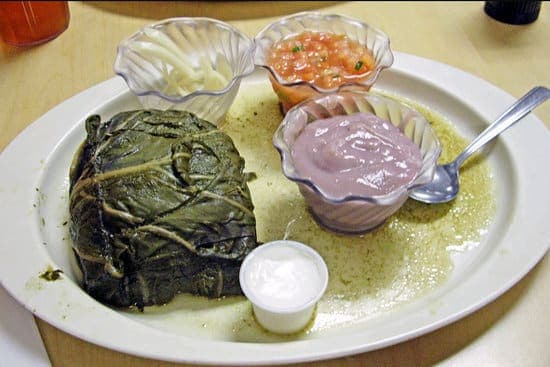
.
A typical Hawaiian plate always has “poi.” (Photo credit: HawaiianScribe)
People often mention “fish and poi” when talking about traditional Hawaiian food. Fish from the sea and poi from the Earth were staples in a diet that developed through generations of skill and sustainability.
When the first Polynesian voyagers arrived, the kanaka maoli (Native Hawaiians) found freshwater streams, fertile soil, and oceans rich with seafood. Communities thrived on what they could grow and catch — taro, sweet potatoes, breadfruit, coconuts, fish, and shellfish and lived off a healthy, plant and ocean-based diet.
Today, that food can be hard to find. What many call “Hawaiian food” is actually “local cuisine” — a delicious fusion of Asian, European, and American influences. Many visitors leave Hawai‘i without ever tasting true traditional Hawaiian cuisine. But seeking it out is more than just a culinary treat — it’s a way to experience the islands’ history, culture, and spirit from the inside out.
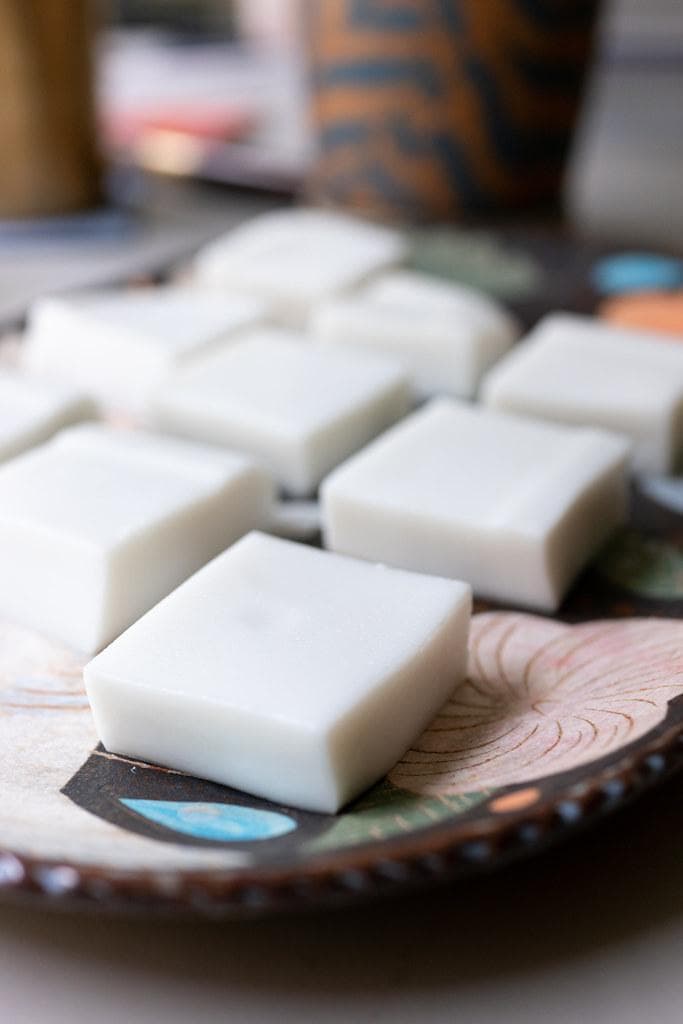
Haupia (Photo Credit: Onolicious Hawai’i)
Laulau is a traditional Hawaiian dish in which pork, fish, or chicken is wrapped in taro leaves and then steamed, baked, or cooked in an underground oven called an imu. Each laulau is wrapped in green ti leaves, a local plant that protects the food and locks in the juices while it cooks. The dish has a tender, earthy flavor and is often part of a Hawaiian plate lunch alongside poi (taro root paste) and lomi lomi salmon.
Poi is a Hawaiian staple made of mashed taro root. It is mixed with water until it reaches a smooth, pudding-like consistency, and has a slightly sour taste due to natural fermentation. It is often served alongside laulau, kalua pig, and other traditional dishes.
A beloved staple at Hawaiian celebrations, Kalua pig is a slow-roasted pork dish traditionally cooked in an underground oven called an imu. The process involves seasoning the meat with Hawaiian sea salt, wrapping it in banana or ti leaves, and covering it with hot lava rocks and earth. After hours of roasting, the result is tender, smoky pork that practically falls off the bone — rich in flavor and served at lū‘aus and family gatherings.
A Hawaiian side dish made from salted salmon, diced tomatoes, onions, and sometimes green onions, the ingredients are massaged together (lomi lomi means “to massage” in Hawaiian) to create a bright, flavorful mix that pairs well with poi or rice. Traditionally, Native Hawaiians salted fish using sea salt they collected from dried ocean water on shoreline rocks.
Poke (pronounced poh-kay) is one of Hawai‘i’s most beloved traditional dishes. This raw fish salad is typically made with ahi (yellowfin tuna) or aku (skipjack tuna), and marinated in a savory mix of soy sauce, sesame oil, and green onions. Other versions feature octopus (tako poke), salmon, or even tofu for a vegetarian take. Modern variations often add spicy mayo, avocado, or seaweed for an extra burst of flavor.
ʻOpihi is a prized Hawaiian delicacy — raw limpet (sea snail) served with just a splash of shoyu (soy sauce) and a sprinkle of sea salt. Harvested by hand from wave-battered rocky cliffs, gathering ʻopihi is both dangerous and deeply rooted in tradition. Its briny, ocean-forward flavor is unlike anything you’ve ever tasted and is cherished by locals for its rarity and cultural significance.
Squid lū‘au is Hawaiian comfort food made by stewing tender squid in a rich blend of taro leaves and coconut milk. The earthy greens and creamy coconut complement the squid, creating a savory, slightly sweet dish that’s both hearty and traditional.
When Polynesian voyagers first settled the Hawaiian Islands, they brought with them essential crops known as “canoe plants.” Carefully chosen for their ability to sustain life on new lands, among these was ‘ulu, a starchy fruit that grows on towering trees that became a vital part of a traditional Hawaiian diet. Breadfruit can be boiled, baked, or roasted, with a texture similar to potatoes and a mild flavor that pairs beautifully with coconut milk. Its versatility and nutritional value made it a cornerstone of everyday meals.
Haupia is a traditional Hawaiian coconut dessert with a texture somewhere between pudding and gelatin. Made from coconut milk and sugar, and thickened with cornstarch, this creamy treat is chilled and cut into squares for serving. While classic haupia is simple and satisfying, modern variations often pair it with chocolate in cakes and pies for a rich island twist.
Kulolo is a chewy Hawaiian dessert made from grated taro, coconut milk, and sugar, traditionally steamed or baked in ti leaves. Its dense, fudge-like texture and rich, caramel-like flavor make it a favorite treat at Hawaiian markets and festivals.
Read about the evolution of the Hawaiian luau here.
Poke is so popular in Hawai‘i that you can find it in nearly every grocery store. But for locals, it’s not just about having poke — it’s about the variety and quality a place offers.
One of the best spots for poke in O‘ahu is Tamashiro Market in Honolulu. Just look for the weathered pink building with the giant red lobster on the front. This Kalihi-Palama staple has been serving some of the freshest seafood on the island for generations. The Tamashiros were making poke long before it was trendy, and their selection is legendary — think ‘ahi limu, spicy ‘ahi, ‘ahi shoyu, aku limu, ‘ahi onion, and ‘ahi chili, just to name a few.
Here’s a quick Poke 101: Hawaiians use two main types of tuna — ‘ahi and aku. ‘Ahi refers to yellowfin or big-eye tuna, which is pale pink and has a cleaner, milder taste. Aku is skipjack tuna, deeper red in color with a bolder, fishier flavor. Many locals prefer aku poke for its stronger ocean taste — after all, poke is about enjoying raw fish. Personally, I’m all about spicy ‘ahi poke, made with creamy mayonnaise and Sriracha. It’s rich, flavorful, and absolutely addictive.
Once you know the basics, reading the labels becomes a breeze. ‘Ahi limu? That’s poke with seaweed. ‘Ahi shoyu? Marinated in soy sauce. ‘Ahi chili? Spiked with chili peppers or chili water. Aku versions often come with the same tasty combos.
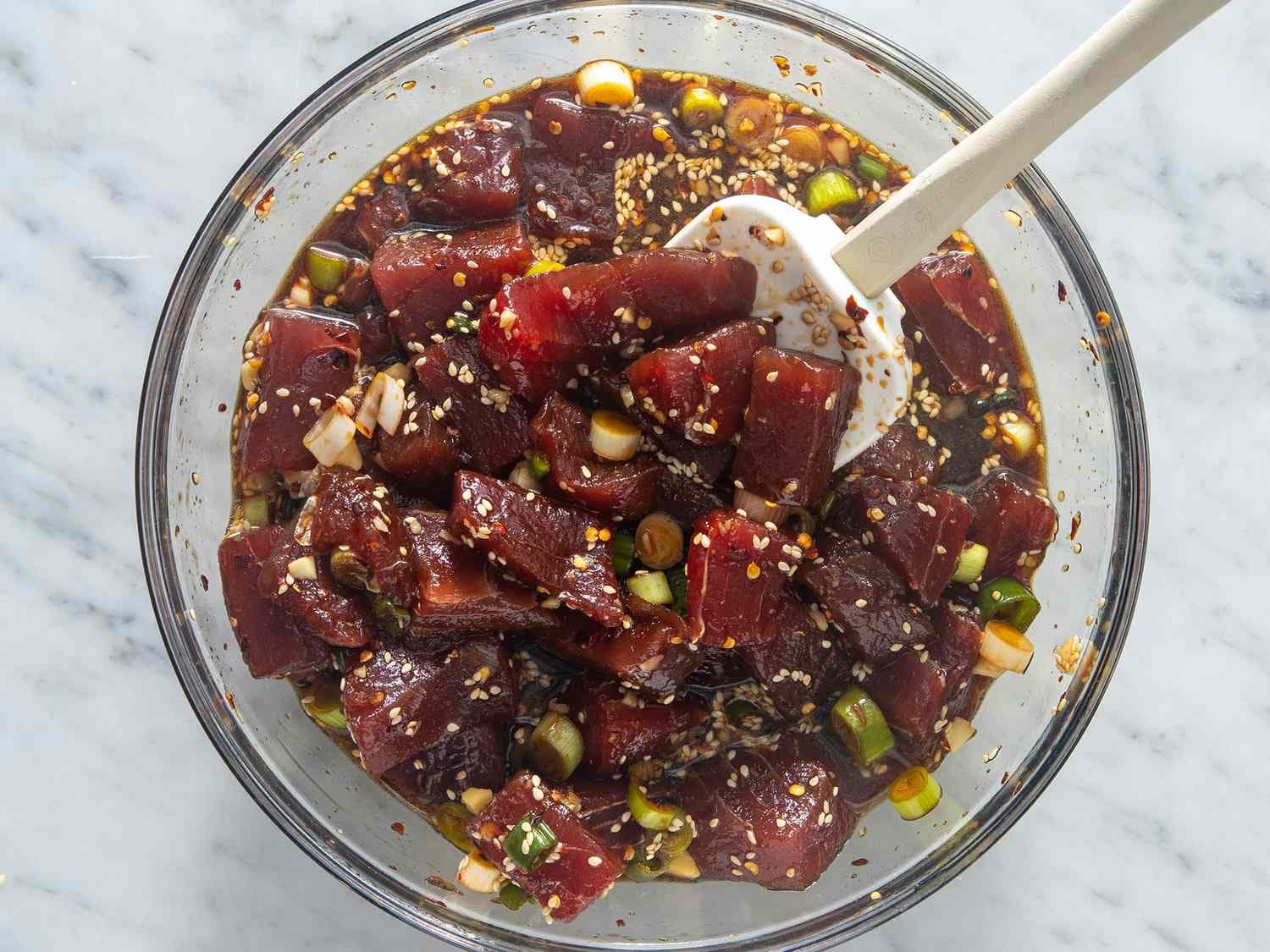
Ahi Poke (Photo Credit: All Recipes)
Location: 1240 North School Street, Honolulu, O‘ahu
It’s becoming harder to find restaurants that serve traditional Hawaiian food. While you can still spot laulau or Kalua pig on lunch plates across the islands, it’s rare to find a place that offers the full Hawaiian experience — complete with poi, lomi salmon, and haupia — all on one plate.
That’s what makes Helena’s Hawaiian Food so special. Opened in 1946 by Helen Chock, this humble, family-run eatery in Honolulu has been serving authentic Hawaiian cuisine for nearly 80 years. Today, her grandson Craig Katsuyoshi carries on the legacy, keeping the flavors and traditions alive.
In 2000, Helena’s received the James Beard Foundation’s Regional Classic Award, a national recognition of its enduring quality and cultural significance. Despite the accolades, the restaurant remains true to its roots — unfussy, welcoming, and all about the food.
You can order à la carte or go for a full Hawaiian set meal. Either way, expect traditional favorites like pipikaula short ribs, squid lū‘au, lomi salmon, and, of course, poi.

Location: 48-140 Kamehameha Hwy, Kāne‘ohe, HI 96744
For more than 50 years, the Hoe family has run the Waiahole Poi Factory in Kāne‘ohe. While it’s no longer a functioning poi factory, this beloved roadside stop specializes in rare hand-pounded poi.
The process is labor-intensive: taro root is harvested, boiled, peeled, and pounded with a heavy stone poi pounder — sometimes weighing up to 10 pounds—until it reaches a smooth, stretchy consistency. With most poi today processed by machine, this old-school method is both a cultural and culinary gem.
If you’re driving to O‘ahu’s North Shore through Kāne‘ohe, keep an eye out for a small, weathered wooden building on the left with just a few tables out front. It’s easy to miss — but definitely worth the stop.
If you’re not hungry for a full plate of Hawaiian food, treat yourself to Waiahole Poi Factory’s signature dessert — the Sweet Lady of Waiahole. Named after the beloved 1980s Jawaiian hit by Bruddah Waltah, this local favorite layers creamy haupia ice cream over warm, chewy kulolo.
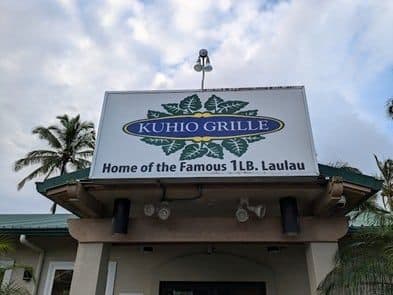
Location: 80 Pauahi Street, Hilo, HI 96720
Home of the legendary One Pound Laulau, Kuhio Grille in Hilo proves that bigger can be better. This Big Island favorite serves up hefty portions of traditional Hawaiian food with a side of local hospitality. If you have room for dessert, their sweets tray features macadamia nut cream pie, sweet potato haupia pie, and crunchy peanut butter mochi. Come hungry — you’ll leave happy.
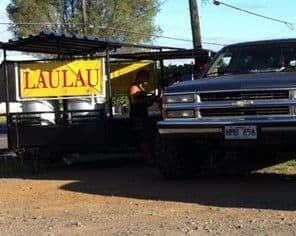
Some of the best traditional Hawaiian food isn’t found in restaurants — it’s at roadside tents. With high land and startup costs, many families share their culinary talents through pop-up stands or food trucks. While food trucks may offer local dishes, they rarely serve poi or rarities like ‘opihi and kulolo.
That’s why I always keep an eye out for my favorite pop-up shops. One makes laulau just the way I like it. Others offer fresh Kalua pig, homemade haupia, and even ‘opihi harvested straight from the ocean. But the ultimate find? A family that hand-makes kulolo. They only set up occasionally, and when they do, their tent is surrounded within minutes. Grating fresh coconut for kulolo is no easy feat — it’s labor-intensive and time-consuming. So when I manage to snag a piece before they sell out, it feels like winning the lottery.
The stands are generally safe. Just do as the locals do — look for cleanliness and enjoy the fresh-made flavors Hawai‘i is known for.
Join our newsletter for travel inspiration, insider tips and the latest island stories.
By subscribing, you agree to receive emails from Hawaii.com. You can unsubscribe anytime. See our Privacy Policy.